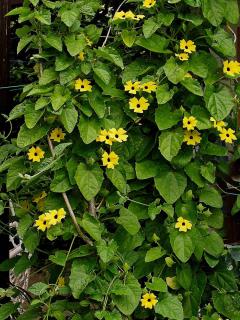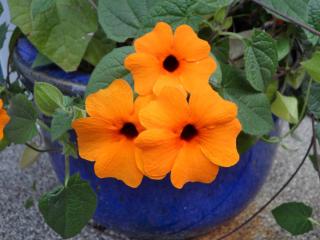

Meet the Black-eyed Susan vine, also known as Thunbergia.
Key Black-eyed Susan facts:
Name: Thunbergia alata
Family: Acanthaceae
Type: climber
Height: 6.5 to 10 feet (2 to 3 meters)
Exposure: sunny, but not scorching
Soil: well-draining – Foliage: evergreen – Blooming: May through October
This stunning climber boasts truly unique flowers. From planting to pruning, care is particularly easy for such a prolific bloomer.
Plant your black-eyed Susan preferably in spring, especially in areas with cold and/or damp winters.
While this vine is perennial, it’s often grown as an annual due to its sensitivity to frost.

Want to shape or thin out the branches? Best prune in fall or late winter.

Perfect for lighting up your day! What’s so striking about these flowers? They keep on coming and dazzle with their trademark yellow hue.
A good way to ensure proper drainage is to set your arbor up on a raised garden bed.